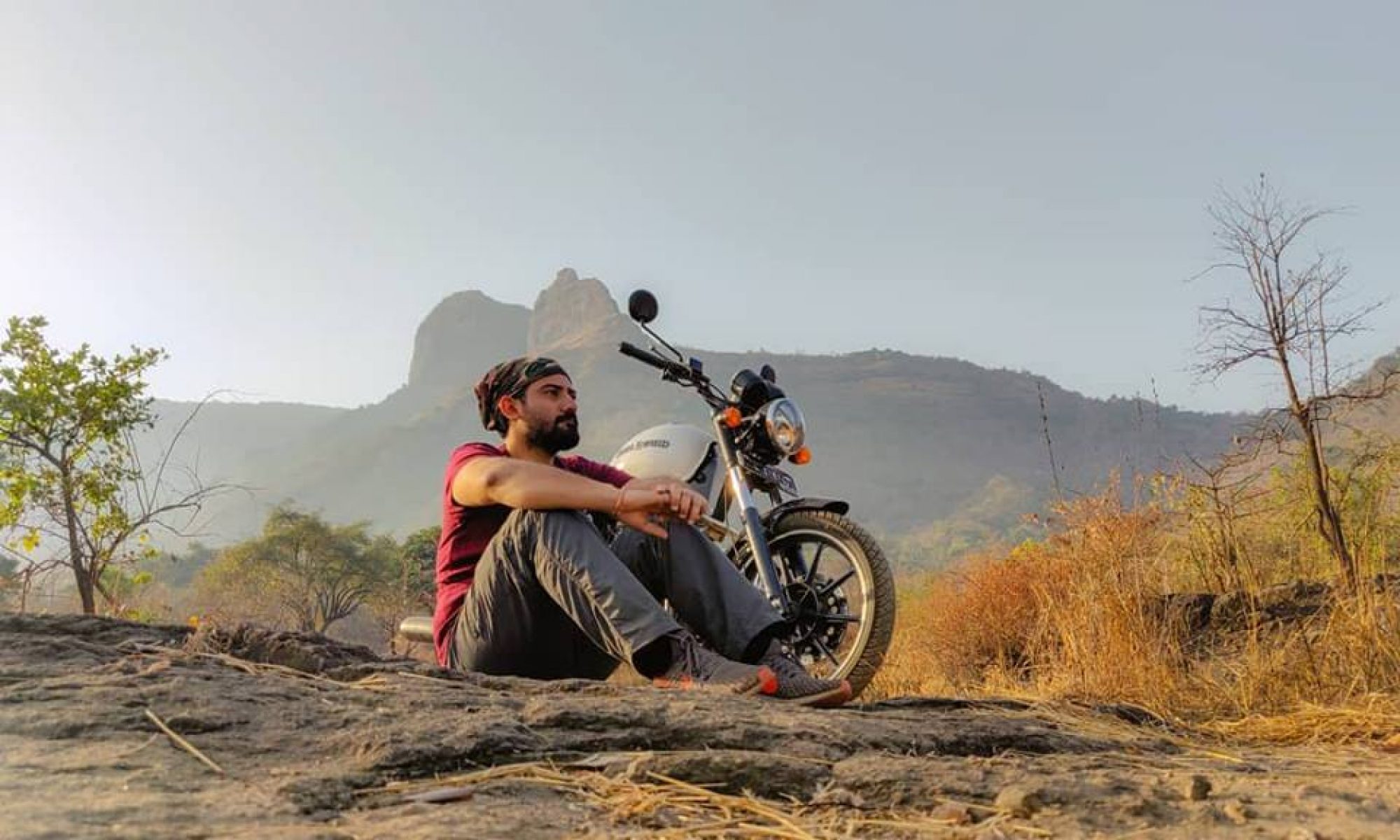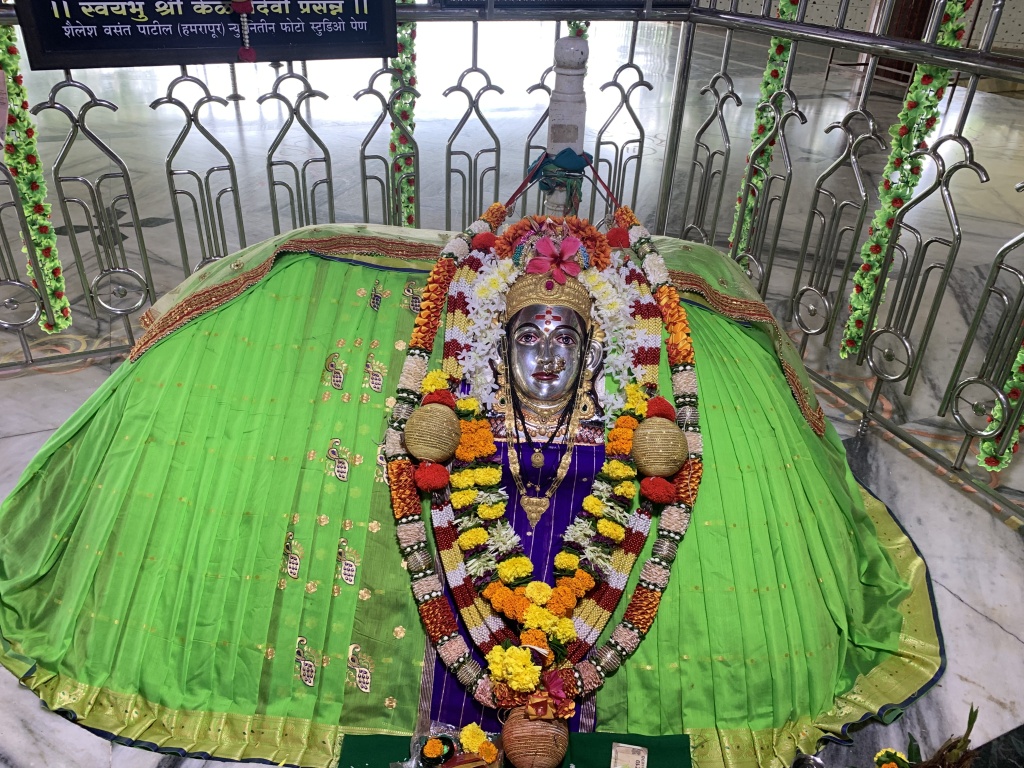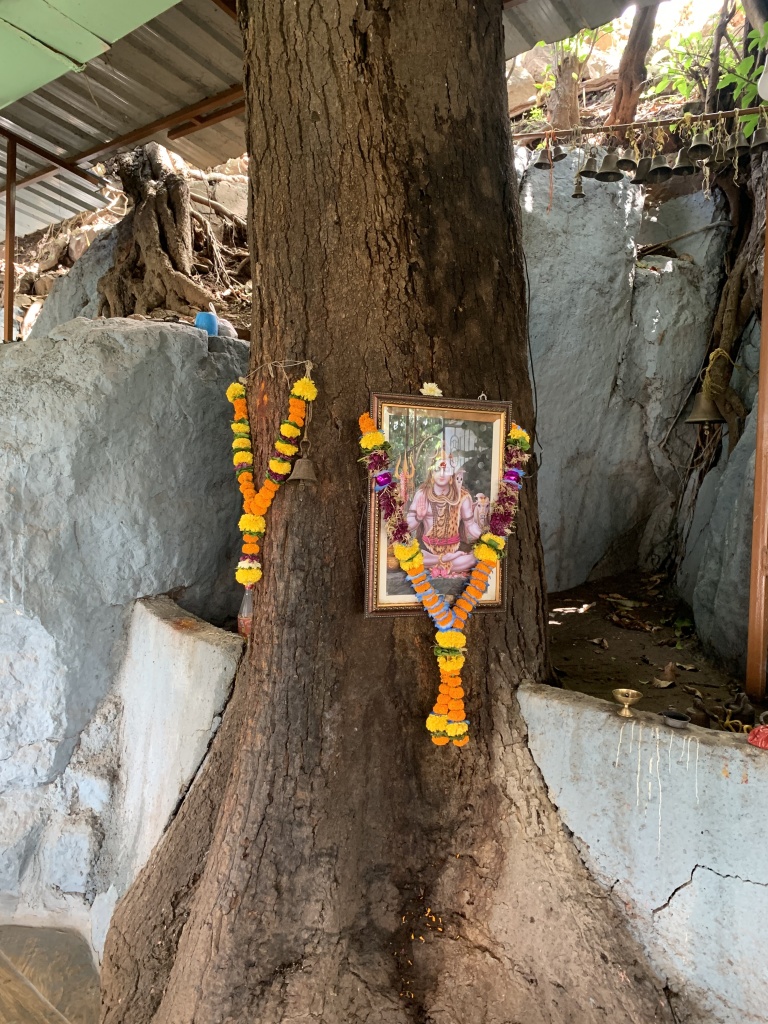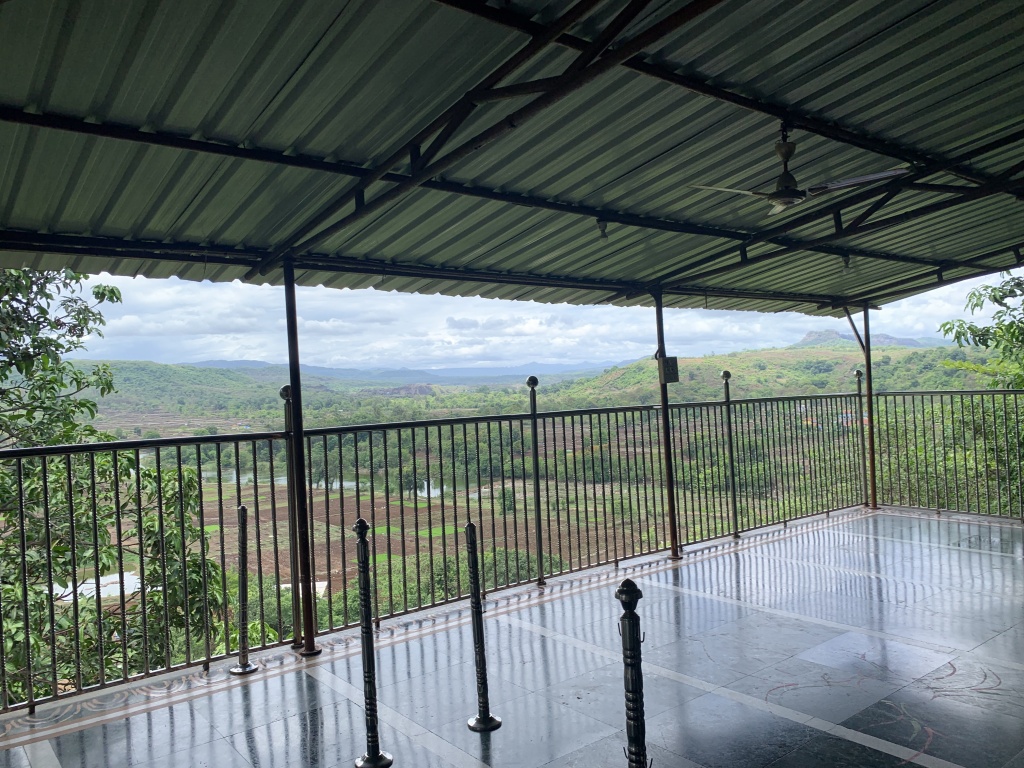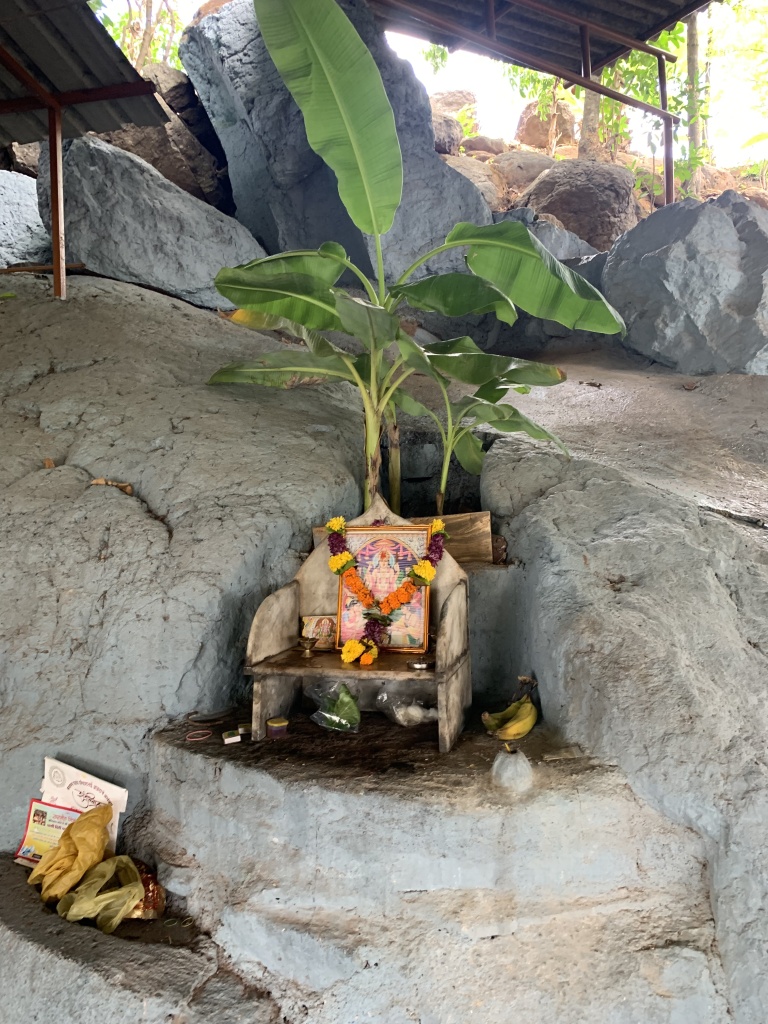Shri Siddeshwar Devasthan is an ancient temple established by Shri Siddeshwar sant around 1200 AD (the exact dates is not known but according to locals, it’s estimated to be around 700-800 years old). It is located on the banks of Patalganga river. It is also known as Gulsunde Shiva temple.

How to reach?
If you are travelling from Mumbai, follow the Bengaluru-Mumbai highway road which leads to Panvel and stay on NH48, then turn right to Pendhari onto Dand Apta road and soon you will find a small village called Rasayani. Enroute you will find Pillai HOC college of engineering and Technology (use this as landmark) and continue your journey straight until you find a small shop by the name Samarth Provision on the opposite side of the road, take a left from here. You will find a very narrow patch of cement road leading you to the temple. This is a residential area and the cement path can fit in only one vehicle at a time, so make sure you ride responsibly. There is parking space available for max. 2-3 vehicles, so make sure you check out parking spots before going all in.
https://goo.gl/maps/c54DJyBdMCfvyh1j8
Detailed explanation :
The moment you reach this temple, you will find 2 massive pillars and a very old banyan tree on the right. Just next to the banyan tree, there is a samadhi of an old saint. As you move ahead on the freshly laid patch of tar road, you will find the first glimpse of the temple sanctum sanctorum and it’s entrance.
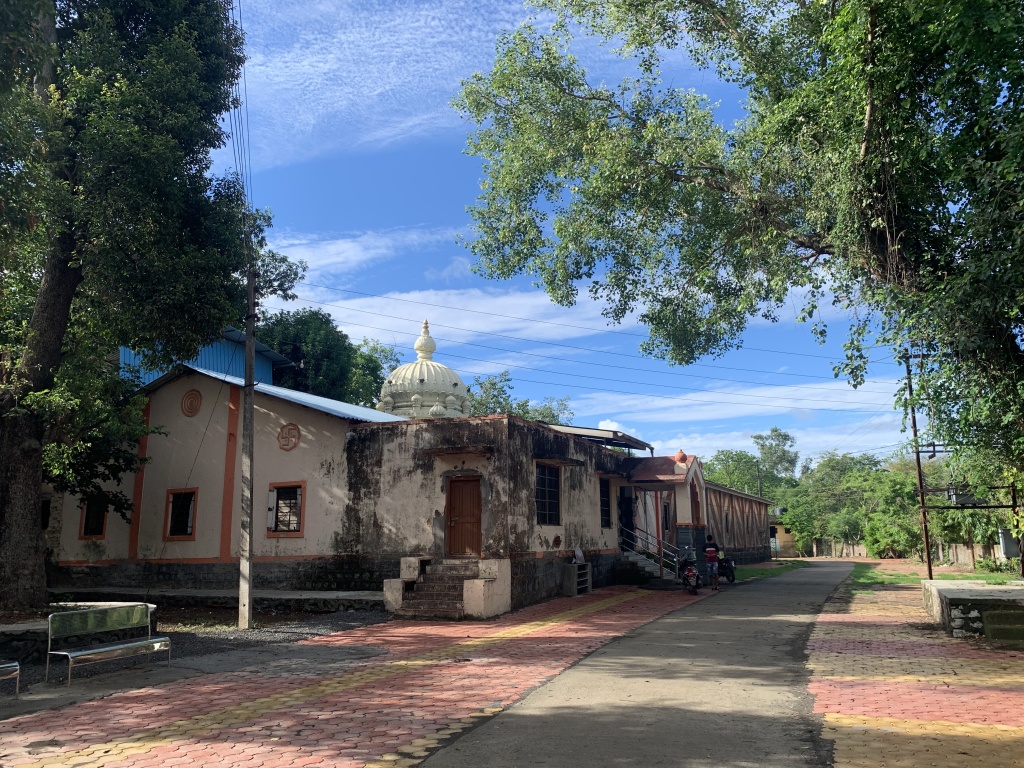
The entrance is adorned with nicely carved designs and logo of Swastik on both sides of pillars. on climbing the stairs, you will find 2 rooms with deities.
The room on the right has Lord hanuman carved fully from single stone and decorated with traditional orange coloured powder (orange sindoor). Lord hanuman is given more of a human form here with moustache. Just next to it, you will find, Lord Rama, Lakshamana and Lord Sita (read Ramayana to know more about them), all are made in marble statues.


The room on the left has Lord Kaal Bhairav again carved fully from single stone and decorated with traditional orange coloured powder (orange sindoor). Usually, you will find Lord Kaal Bhairav alone but in this temple, it is established with his wife who is adorned with orange sindoor and Mangal sutra.

As you move ahead, you will find a small temple with sanctum sanctorum which is painted in cream colour but the foundation still remains the same. The foundation is made of small slabs of rocks, properly cut and placed without the use of cement. They have used patches of plaster here and there to curb the leaks considering it’s an extremely old temple, so it’s obvious it will have it’s fair share of wear and tear but still it has stood the test of time and major portion of the temple hasn’t been tampered with. As you move across, you will find the first view of Patalganga river with sea plants surrounding the temple along with rich flora and fauna across it. As you move towards the entrance of the temple, you will two big slabs which have two elephants and their mahouts sculpted facing towards each other. Elephants are sacred animals to Hindus and it is living incarnation of Lord Ganesh, hence you find this in most temples especially in Maharashtra. According to hindu beliefs, elephants are also considered as sacred symbols of peace, mental strength and power. As you climb the stairs towards entrance of the temple, you will observe that it is intricately designed and sculpted and you will find a small statue of Lord Ganesh in the centre of entrance (which has eroded a little over time).


As you move inside, you will find a huge statue of Nandi carved in a single stone and the sanctum sanctorum is delicately carved in concentric circles with utmost precision and exact dimensions and distance. You can only feel astounded and surprised as to how the sculptors back in those days carved such beautiful temples with their bare hands and their tools (which is predominantly hammers/chisel). As you move straight towards inner sanctum sanctorum you will notice two deities one either side of the pillars. For going into inner sanctum sanctorum, women need to wear traditional sarees or salwar kameez and men need to go in without their shirts. The moment you enter into the inner sanctum sanctorum, you will feel an extreme gush of positive vibrations flowing through your body. Lord Shiva is submerged in the water (it is believed the Patal Ganga river still finds it’s way to Lord Shiva). You have almost 15 bells hanging on top of Lord Shiva and Lord Parvati standing opposite to lord shiva. You can sit there and meditate for hours and get lost in an abyss communicating with Lord Shiva. As you see the inner sanctum sanctorum, you will see it’s top is also sculpted in the same way with that exact precision of concentric circles as observed in the outer sanctum sanctorum. You can offer Bael leaves and flowers to lord shiva and enjoy the solitude with the supreme god. As you sit on the stones which dates back to 1200 AD and meditate, you can actually imagine and feel part of it’s history. The stones of these temples have stood the test of time and has seen hundreds and hundreds of generations of people pray and visit it’s premises.


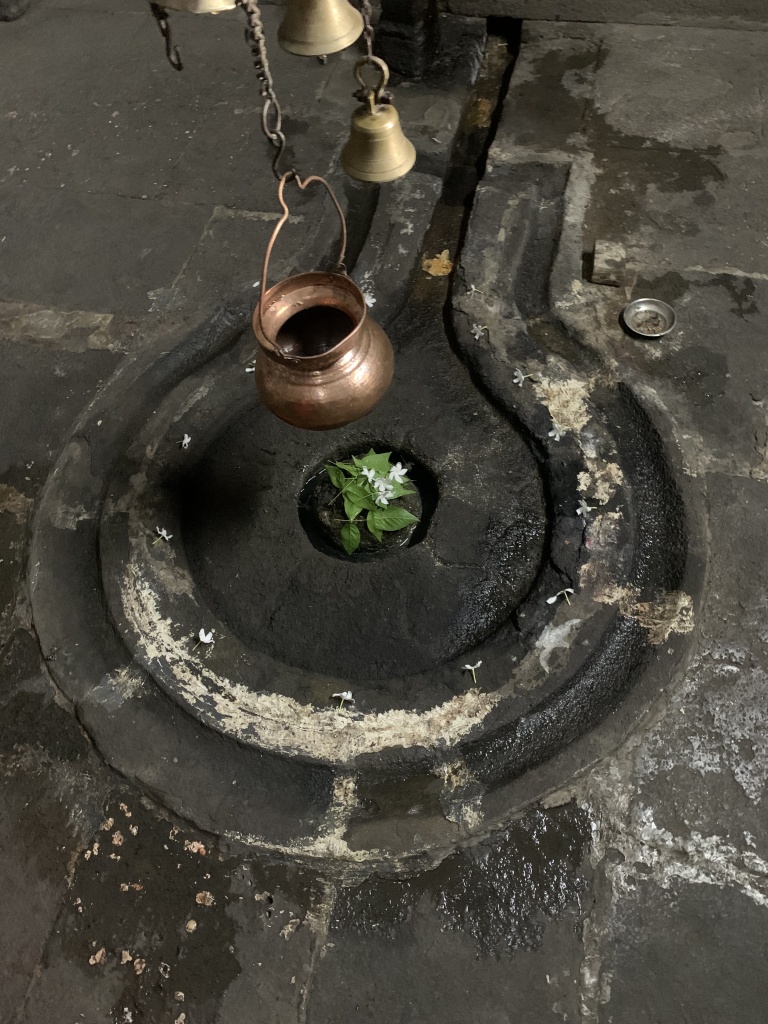
As you come out of the temple, you will find an old banyan tree which is hundreds of years old and it’s roots have spread to all directions. There is ample space around here and you can sit witness the birds chirping, the river flowing calmly and the women in village going around their daily chores of washing clothes near the banks of the river. For people who like to take bath in river, this is an excellent opportunity to dive into the river (provided you are fairly good swimmer, never underestimate river currents) and enjoy natural beauty swimming around the temple.



Interesting Fact :
The temple is under the supervision of 25 families in the Gulsunde village. Each year the responsibilities for taking care of the temple and it’s daily rituals is handed over to families on a rotation basis. So a family which takes care of temple in 2022, will effectively take care of the temple again after 25 years i.e. in 2047. This tradition is followed by these families for generations now.
Timings :
Morning : 06:00 AM to 12:00 PM
Evening : 04:00 PM to 08:00 PM (sometimes closes by 07:00 PM)
During Mahashivratri, it is open for 24 hrs and is heavily crowded, so make sure you plan your visit accordingly.
Link to Twitter to read about this in a short thread :
